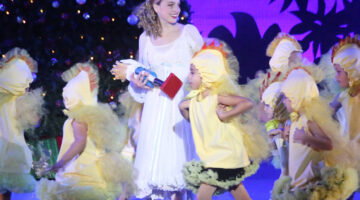Stock Island’s Southernmost Pre-Columbian Archaeology Site is the subject of next Key West Art & Historical Society Distinguished Speaker Series presentation
On Thursday, June 28, Key West Art & Historical Society’s Distinguished Speaker Series welcomes historian Ryan Harke to the Custom House Museum, 281 Front Street, where he will present research from his dissertation on the “Southernmost Pre-Columbian Site.” The 6:00pm presentation investigates the possibility of whether Stock Island was a seasonal fishing ground used by mainland natives or the site of a permanent year-round village.
“Knowing whether it was a year-round village provides a platform for other exciting research in the future,” says Harke, a doctoral student and professor of archaeology and anthropology at the University of South Florida. “If it was year-round, how was that culture related to other native chiefdoms on the mainland, like the Tequesta in Miami or the Calusa in southwest Florida?”
For over eight years, he has conducted compliance archaeology throughout Florida and has served as a public archaeologist for the Florida Public Archaeology Network at Flagler College in St. Augustine. Harke’s primary interest is in the relationship between small-scale foraging economies and fragile ecosystems, which have led him to his studies in the Florida Keys and its aboriginal occupants.
“I’ve always been interested in coastal Native American populations in Florida, especially those that relied primarily on the sea for their livelihood,” says Harke. “So little is known about the natives who lived in the Keys.”
Harke is studying one of the biggest Pre-Columbian habitations ever known in the Keys and the second archaeological site recorded in Monroe County (located where the prison and its parking lot now are). By studying the black-earth mound and a large midden of shells, fish, shark, sea turtle, shellfish, and the now extinct Caribbean Monk seal and pygmy sperm whale remains found there, Harke can determine how Florida Keys Native Americans interacted with their island environments 800 years ago, including knowing what species they ate and what tools they used.
“95% of the history museums and tours and tourist information is concerned with the European, American, and later Caribbean presence in the islands,” he says. “It’s exciting to learn more about the first people to ever inhabit Key West and the other Keys. I hope to research in the Keys for many years to come.”
Distinguished Speaker Series presentation tickets are $5 for KWAHS members, $10 for non-members, and are available at kwahs.org, click “tickets.” Early ticket purchase is recommended. Sponsored by the Helmerich Trust and the State of Florida Division of Cultural Affairs. For more information, contact Adele Williams, Director of Education, at 305.295.6616, x115. Your Museums. Your Community. It takes an Island.
IMAGE:
In a method similar to that which he is employing with artifacts recovered from the Stock Island site, Ryan M. Harke, MA, RPA, mills samples of powdered shell off of a horse conch to study its geochemistry to determine how long they live. At 6:00pm on Thursday, June 28, Harke will present research from his dissertation on the “Southernmost Pre-Columbian Site” at the Custom House Museum. (Contributed photo)
###
[livemarket market_name="KONK Life LiveMarket" limit=3 category=“” show_signup=0 show_more=0]







No Comment